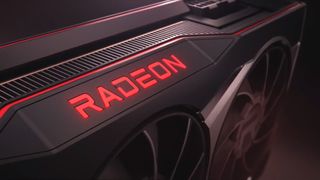AMD’s GPUs and CPUs are becoming seriously popular with Linux gamers
According to a new report from Boiling Steam

AMD is making impressive strides when it comes to gaming on Linux, both in terms of adoption of its processors and graphics cards with desktop PCs, according to a new report.
The AMD versus Intel or Nvidia battles are well-documented in general, of course, but it’s certainly interesting to see a snapshot of the Linux world, as brought to us by Boiling Steam, with stats compiled using data from ProtonDB.
As Boiling Steam notes, the Steam hardware report doesn’t provide enough depth to drill-down into PC configurations, but ProtonDB – a site that tracks the compatibility of games with Valve’s Proton (the runtime for playing Steam games on Linux) – is more useful in this respect, if more limited in terms of sample size.
At any rate, going with a sample of over 110,000 Linux gamers drawn from ProtonDB, when it comes to graphics cards, Nvidia is clearly in the lead – but not nearly as dominant as it is in the broader PC gaming arena.
As of January 2021, 37.5% of Linux gamers have thrown their lot in with AMD, meaning Nvidia owns a 62.5% market share, Boiling Steam observes. That is, of course, still very much the majority, but compare that to recent figures from analytics firm Jon Peddie Research (JPR) for the overall discrete GPU market, where Nvidia has been seen to own an 80% market share.
What’s even more telling here is that if you look at the Boiling Steam stats for January 2019, the picture was similar to JPR with a 25% share for AMD – so that has leapt by a 50% increase over the course of two years. Impressive growth for AMD on Linux, indeed.
One commenter on the Boiling Steam article also pointed to GamingOnLinux stats, gleaned from just over 10,000 registered users on the site, via their profile data (although take that with a pinch of salt, obviously). At any rate, this much smaller sample set shows AMD with a 41.7% share, up from 30% in July 2019 (note that this data also takes in some laptops, as Intel is shown with a GPU share of 3.6%, meaning integrated graphics are being used).
Get daily insight, inspiration and deals in your inbox
Get the hottest deals available in your inbox plus news, reviews, opinion, analysis and more from the TechRadar team.
Overall, Linux gamers would appear to be increasingly adopting AMD graphics cards by some margin, then, likely aided by the fact that AMD’s drivers are open source, and the firm is willing to work with the community to improve them.
On the Nvidia front, its graphics driver is proprietary (closed) – although admittedly works well on Linux (that said, it depends on who you ask, to be fair), and of course there are advantages in terms of more powerful GPUs from Team Green, not to mention ray tracing (and DLSS, where version 2.0 has picked up serious momentum).
AMD is, of course, striking back with its new Big Navi GPUs which finally provide some competition at the high-end – or at least they will do, when stock issues are resolved (the same is true of Nvidia’s RTX 3000 range on the supply front, as you’ve doubtless seen).
Processor wars
So what about CPUs? In this case, Boiling Steam’s compiled stats show AMD having a market share of 50% as of January 2021, meaning it’s level-pegging with Intel. Two years ago, AMD’s share was 27% compared to 73% for Intel, so huge strides have been made here – but that’s unsurprising given how good Ryzen CPUs have got in recent times.
Seeing as Intel’s next-gen Rocket Lake CPUs won’t launch until March at the earliest, according to the rumor mill – and they might not go on sale immediately either – that likely gives AMD time to push over the top with Ryzen 5000 momentum and claim the majority share in processors before then.
Looking at the GamingOnLinux stats, they already show AMD having taken the majority share – just – on 52.4%, so again it’s a very similar picture.
Boiling Steam also breaks down the most likely CPU and GPU combos, and those who have bought an Intel processor are “far, far more likely” to own an Nvidia graphics card. Similarly, those with an AMD CPU have a good chance – well, a 50% one – of also owning an AMD GPU.
Those with some specific distros – including Arch, Gentoo, and Fedora – are more likely to have an all-AMD system, too.
Bear in mind that Linux gamers represent very much a minority when it comes to the PC gaming scene. As Tom’s Hardware, which spotted Boiling Steam’s report, points out, they total 1% to 2% of the overall market, depending on who you listen to.
- How to build a cheap gaming PC that doesn't suck
- Check out this week's best PC game deals
Darren is a freelancer writing news and features for TechRadar (and occasionally T3) across a broad range of computing topics including CPUs, GPUs, various other hardware, VPNs, antivirus and more. He has written about tech for the best part of three decades, and writes books in his spare time (his debut novel - 'I Know What You Did Last Supper' - was published by Hachette UK in 2013).
